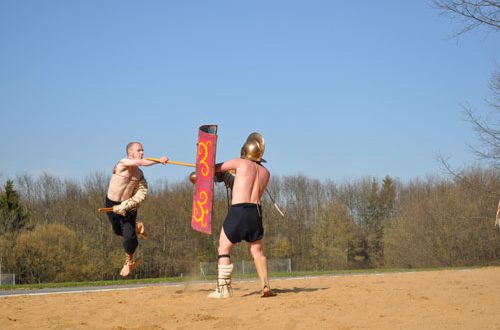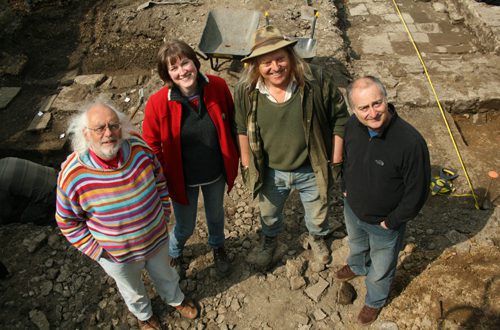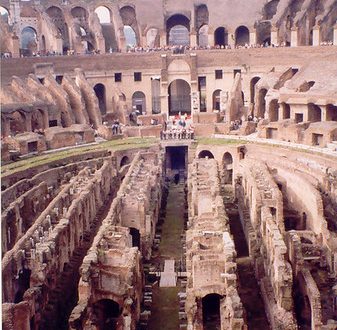 The seas off the coast of Montenegro are largely under-explored by archaeologists, but a school-boy’s discovery could put one site near the city of Bar on the archaeological map once and for all. When 16-year old Michael Le Quesne, from Buckinghamshire, was snorkelling at the bay of Maljevik in September, he came across what looked first of all like some round stones two metres below the surface.
The seas off the coast of Montenegro are largely under-explored by archaeologists, but a school-boy’s discovery could put one site near the city of Bar on the archaeological map once and for all. When 16-year old Michael Le Quesne, from Buckinghamshire, was snorkelling at the bay of Maljevik in September, he came across what looked first of all like some round stones two metres below the surface.
Many people might have thought nothing of it and would have snorkelled happily on, preferring to look for fish instead. But Michael had obviously learned a thing or two about old ‘stones’ at a young age. When his father, professional archaeologist and Historic Environment Consultant at RPS Group, Charles Le Quesne, saw the rocks his son had spotted, he realised they were in fact fluted columns on plinths.
Exploration set for Spring 2010
According to Charles Le Quesne, it is much too early to say whether this is actually a Graeco-Roman port. He will be working with Dr Lucy Blue (presenter of BBC Two’s Oceans programme) and Professor David Peacock, both from the University of Southamptons Department of Maritime Archaeology, to explore the site properly in Spring 2010.
What Le Quesne can confirm about the site is that is it close to Bar, the site of the ancient port of Antibarum, which itself has not yet been thoroughly explored by archaeologists. Le Quesne said: This might be connected with quarrying of local stone for use in a monumental building there, or possibly at one of the many other Graeco-Roman sites along the coast (Ulcinj, Budva, Tivat, Risan, Cavtat). They might even be related to a nearby Fransiscan monastery (Ratac).
“On the other hand there is widespread evidence for substantial sea-level change since the Roman period with many reports of sunken coastal settlement in this area of very substantial seismic activity. He adds that there are many questions about the site that need to be addressed.
Submerged Settlements
 The site was found roughly 150m off the beach at Maljevik, near Bar, and there are two areas of ancient ‘stones’, roughly 50m across, according to Mr Le Quesne. He points out that it is not clear at this stage whether the stones are in situ or not. However, he adds that in the context (a lot of Roman pottery has been found on the sea floor in the area, as well as local reports of other submerged structures in the bay) then it’s reasonable to think this could be another Graeco-Roman site.
The site was found roughly 150m off the beach at Maljevik, near Bar, and there are two areas of ancient ‘stones’, roughly 50m across, according to Mr Le Quesne. He points out that it is not clear at this stage whether the stones are in situ or not. However, he adds that in the context (a lot of Roman pottery has been found on the sea floor in the area, as well as local reports of other submerged structures in the bay) then it’s reasonable to think this could be another Graeco-Roman site.
Samples of the stone are currently being analysed by Professor Peacock at Southampton University, but early indications are that it is non-precious, local rose-coloured stone, of the same kind that was also used during medieval times in buildings in Dubrovnik and Venice.
Little is known about the Graeco-Roman town of Antibarum, which is about 3km south of Maljevik. Some objects and structures (such as an early Christian church) were uncovered during the 1970s when a modern port was built and part of the area was dredged.
Looted Shipwrecks
Numerous ancient shipwrecks – from Roman and Venetian times – have also been found off the coast of Montenegro, many of which have been severely looted. Le Quesne and the team from Southampton University hope to extend their exploration to some of these sites as well. Criminals have been robbing the sites of shipwrecks along the Montenegro coast “pretty much without restraint” according to Le Quesne. He hopes that the research and conservation project will help to address this problem and also to highlight the value of Montenegro’s heritage sites.
The project’s first task will be to create a digital inventory of sites and artefacts, including GPS mapping. The team will work with local and national authorities, as well as the Bar archaeological museum, curated by Mladen Zagaranin. Le Quesne adds that a lot of information has been gathered by local archaeologists working in Montenegro under difficult circumstances.
Le Quesne told the Telegraph that the ruins in question are unlikely to signify a major ‘lost city’, and that for now the nature of the site is a mystery: If it is a monumental building it is not going to be part of a small hamlet, but it is not a missing Atlantis, as we would already know about it. It remains a bit of a mystery. The area was an important, ancient trading route, so it may have been a port.
Photos by Mladen Zagaranin and Charles Le Quesne.



